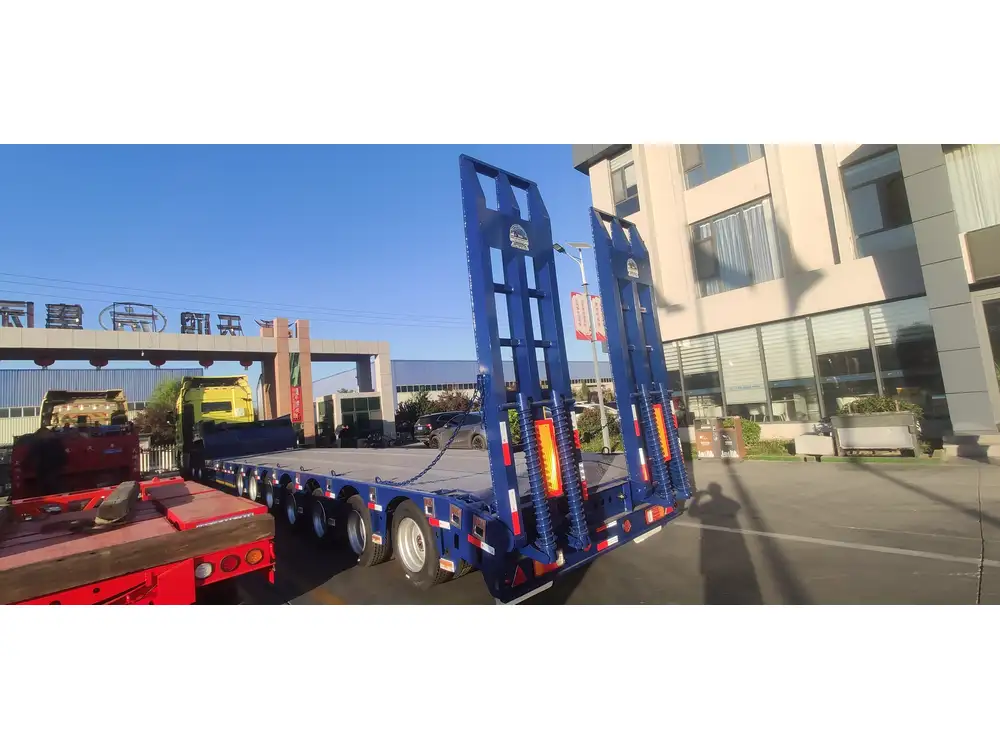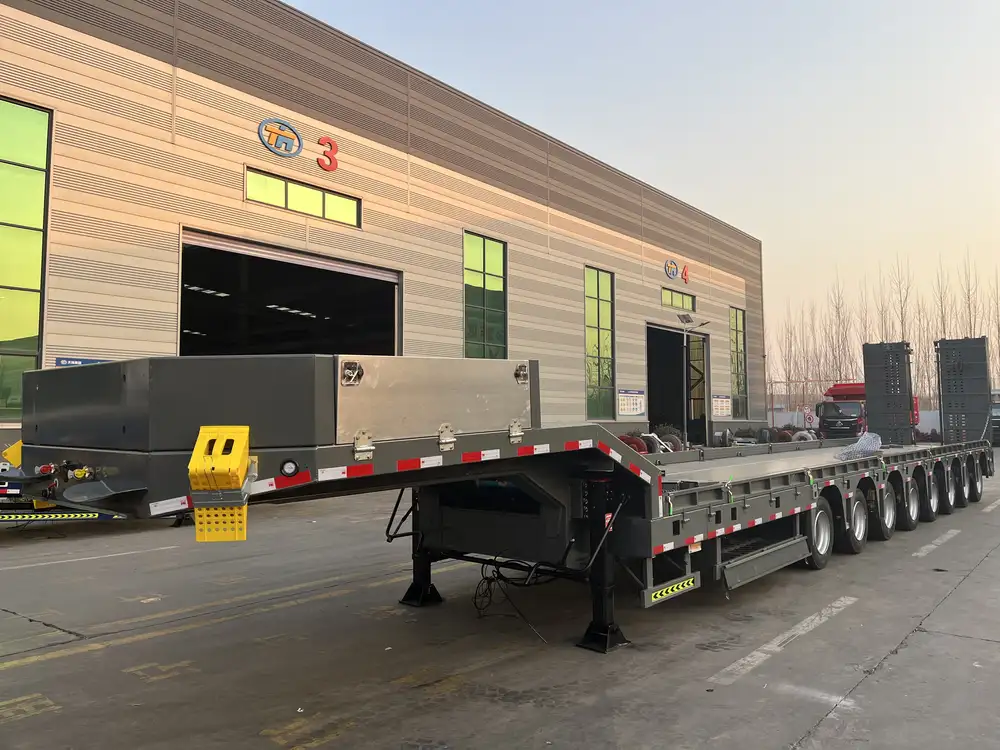When it comes to transporting cargo on a semi flatbed trailer, effective tarping is not just a matter of good practice; it’s essential for securing your load and ensuring safety on the road. Covering your cargo appropriately helps protect it from environmental hazards like rain, snow, or debris, while also adhering to regulations that promote safe transportation.
Importance of Properly Tarpping
Understanding the significance of tarp usage is crucial. Tarps provide:
- Protection Against Weather: Shielding your load from rain, snow, and wind.
- Load Security: Ensuring that cargo remains in place throughout the journey.
- Safety Compliance: Meeting transport regulations that necessitate securing loads thoroughly.
Overview of Tarp Types
Before diving into the practical steps, we should familiarize ourselves with the various types of tarps commonly used in semi flatbed transportation:
| Type of Tarp | Material | Uses | Benefits |
|---|---|---|---|
| Canvas Tarps | Cotton/Polyester | General purpose and lightweight | Breathable, sturdy, and cost-effective |
| Heavy-Duty Vinyl | PVC | Protecting against heavy rain | Waterproof, UV resistant |
| Mesh Tarps | Polyethylene | Ventilation for outdoor equipment | Allows water drainage, lightweight |
| Reflective Tarps | Polyethylene with coating | Cargo exposed to sun | Keeps temperature down, UV resistant |

The Essential Tools You Need
To efficiently tarp a semi flatbed trailer, ensure that you have the following tools at your disposal:
- Tarps: Choose the right tarp type based on load and weather conditions.
- Tarp Straps or Bungee Cords: For securing the tarp tightly to the load.
- Ratchet Straps: To offer additional tie-down options to prevent movement.
- Corner Protectors: To minimize wear on the tarp and prevent cuts.
- Ladder or Step Stool: For easy access to higher cargo.
- Gloves: To protect your hands while handling the tarp and straps.
Step-by-Step Instructions for Tarping Your Semi Flatbed Trailer
Now that we have the necessary tools and understand the types of tarps, let’s explore the step-by-step process of tarping a semi flatbed trailer.
Step 1: Assess the Cargo
Before covering your load with a tarp, take the following into account:
- Dimensions of the Load: Measure the height, width, and length.
- Weight Distribution: Ensure that your weight is evenly distributed to prevent instability.
- Type of Cargo: Identify if your cargo is sensitive to moisture.

Step 2: Select the Right Tarp
Based on the cargo assessment, select a tarp that caters specifically to your needs:
- Heavy Cargo: Opt for heavy-duty vinyl tarps for maximum protection.
- Sensitive Items: Use canvas tarps for breathability if moisture is a concern.
Step 3: Position the Tarp
- Unfold the Tarp: Spread the tarp over the load, allowing the excess material to hang over the edges.
- Center the Tarp: Make sure it is evenly placed on all sides to ensure complete coverage.
Step 4: Secure the Tarp

Tying Down with Tarp Straps
Attach Tarp Straps or Bungee Cords: Begin from the corners, looping them around the trailer’s side rails and securing them to the tarp.
Ensure a Secure Fit: The tarp should be snug enough to avoid flapping but not so tight that it strains the material.
Ratchet Straps for Extra Security
- Use Ratchet Straps: Attach these to the trailer’s anchor points while looping over the tarp.
| Ratchet Strap Placement | Purpose |
|---|---|
| Across the width of the trailer | Prevent side movement of the tarp |
| Securing the ends | Providing additional static support |
Step 5: Adjust and Finalize
- Double-Check Tightness: Ensure that all straps are fastened securely.
- Watch for Loose Ends: Trim or secure any excess tarp material to avoid drag while driving.

Additional Safety Tips
Regular Inspections
Conduct consistent checks on tarping:
- Before Departure: Double-check the tarp placement and tightness.
- En Route: Make periodic stops to ensure that the tarping remains intact.
Weather Consideration
Adapt your tarping technique depending on weather conditions:
- Heavy Rain: Use a slant to allow water runoff.
- Windy Conditions: Consider employing additional tie-downs or heavier tarps to prevent flapping.

Common Tarping Mistakes to Avoid
| Mistake | Consequences |
|---|---|
| Tarp Too Loose | Flapping, wear on the tarp, and possible cargo damage |
| Insufficient Fasteners | Risk of tarp detaching |
| Ignoring Weather Changes | Vulnerability to moisture or wind damage |
Conclusion
In the world of transportation, mastering the art of tarping a semi flatbed trailer is indispensable. Proper tarping not only safeguards your cargo but also fosters safety on the road, whereby cargo integrity meets legal standards.
By understanding the various tarp types, equipping yourself with essential tools, and following a structured approach, one can minimize risks associated with every transport journey. Prioritize diligence in the tarping process—it’s not just a precaution; it’s a commitment to quality and safety that ultimately elevates your operations’ reputation in the industry.
Frequently Asked Questions (FAQs)

What is the best material for tarping a semi flatbed trailer?
While heavy-duty vinyl offers superior weather resistance, canvas tarps excel in breathability. The best material ultimately depends upon your specific load requirements.
How often should I check my tarp during transport?
It’s advisable to check your tarp at regular intervals, especially after making sharp turns or during harsh weather.
Can I use multiple tarps over one load?
Yes, using multiple tarps is commonplace, especially for larger cargo. Ensure they overlap adequately to create a seamless cover.

What happens if my tarp rips while driving?
If you discover a rip in your tarp during transit, address it with an emergency repair kit or swap it out with a spare tarp once you can safely stop.
By adhering to these guidelines, securing your load with the utmost proficiency becomes manageable and effective, allowing you to navigate the complexities of semi-trailer transport with confidence and assurance.



